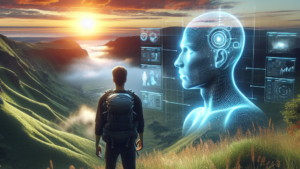Bulukani Mlalazi – Principal Consultant for AI (ADAICO)
In today’s rapidly evolving technological landscape, Generative AI Agents driven by large language models (LLMs) are at the forefront of innovation. These agents are revolutionising the way we interact with technology, offering capabilities that extend beyond current limits.
Recent Developments
In the past year, the field of Generative AI has seen remarkable advancements that promise to further reshape our interactions with technology. These developments enable us to better navigate the vast expanse of digital information, streamline monotonous tasks, and enhance our productivity and satisfaction. Reflecting on these rapid changes, I was inspired to share some my thoughts on the topic, in light of developments like LangChain’s State of AI Agents (https://www.langchain.com/stateofaiagents) industry survey and Microsoft’s AI Agent integration announcements at Ignite 2024, (https://news.microsoft.com/ignite-2024-book-of-news/).
What Are Generative AI Agents?
Generative AI Agents are advanced systems that utilise large language models (LLMs) to generate text, images, videos, and other content types. These models have evolved significantly since their inception, particularly with the introduction of transformer-based neural networks such as GPT-4o by OpenAI, LLAMA by Meta, and numerous Open Source LLMs hosted on HuggingFace (https://huggingface.co/). These agents can perform complex information retrieval and content synthesis, and interact with external systems to perform real-world actions.
Why Are They Important?
The capabilities of Generative AI Agents transcend the limits of LLM content generation, by permitting advanced, customisable interactions with digital systems and real environments using human-readable instruction sets. They are particularly valuable in business processes, where they can augment or automate various functions. These agents can interact with external systems, enabling richer document synthesis and information retrieval, and they can manage long-running tasks that go beyond typical chat interactions. This makes them ideal for applications that require a high degree of precision and adaptability.
Why Should You Care?
We are now in the age of AI-augmentation! AI is not here to replace jobs but to transform them. Jobs consist of various tasks, some of which are creative and rewarding, while others are repetitive and monotonous. Generative AI Agents can help us humans to focus our collective effort on high-value tasks by delegation of more repetitive ones under human oversight. This allows for a more efficient allocation of human resources, enhancing overall productivity and job satisfaction.
In summary, Generative AI Agents represent a significant leap forward in AI technology. They offer enhanced capabilities for complex task management, making them indispensable tools in modern business and research environments. Embracing these agents can lead to more efficient operations and a greater focus on human creativity and innovation.




